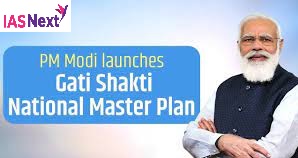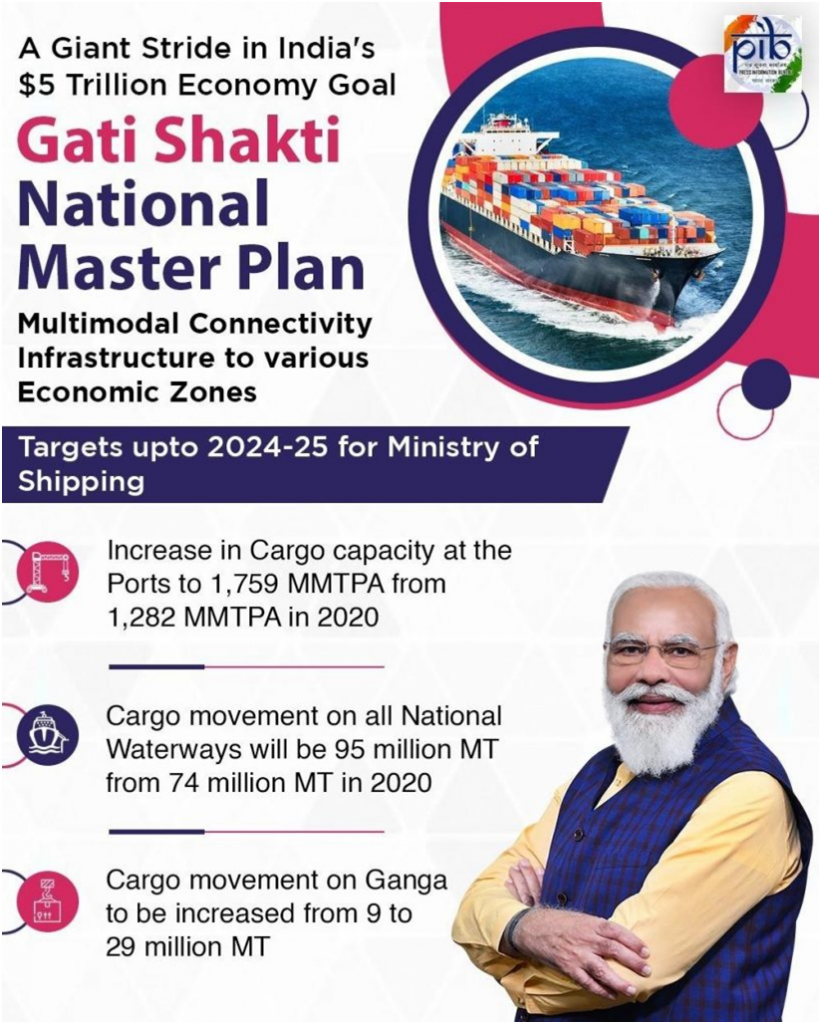CURRENT AFFAIRS
Get the most updated and recent current affair content on Padhaikaro.com
PM GatiShakti — National Master Plan
- IAS NEXT, Lucknow
- 20, Jan 2022

Reference News:-
Large-scale absence of coordination and collaboration among agencies has been a major challenge to time bound infrastructure project implementation in India.
Very often these projects have faced time overruns, leading to significant cost escalations.
An overview of pending projects in the country:
As per the Ministry of Statistics and Programme Implementation (MoSPI), Government of India, in the beginning of 2021, 1,687 Union Government projects under implementation, valued more than Rs 21.45 lakh crore, had run into cost overrun of nearly 20 percent, largely because of their delays.
The reason for delays include underestimation of original project cost, spiralling land acquisition cost, delays in environment, forest and wildlife clearances and industrial licensing permission, road crossing of pipelines/transmission lines, shifting of utilities, delays in the tie-up of project financing, delays in finalisation of detailed engineering, etc.
In addition, there are bottlenecks at the State Government level such as issues in land acquisition and removal of encroachments, relief and rehabilitation planning and implementation, timely issuance of no objection certificate, necessary power and water supply, and work order related issues.
What is the solution then?
The recently announced Prime Minister of India’s Gati Shakti National Master Plan for Multi-Modal Connectivity is all set to revolutionise the way infrastructure and logistic development projects are planned and implemented in India. It will bridge huge differences between macro planning and micro implementation.

About PM GatiShakti:
Launched in 2020, it is a digital platform that connects 16 ministries — including Roads and Highways, Railways, Shipping, Petroleum and Gas, Power, Telecom, Shipping, and Aviation.
It aims to ensure holistic planning and execution of infrastructure projects.
- It aims to boost multimodal connectivity and drive down logistics costs.
- PM Gati Shakti will cover the infrastructure projects worth over Rs 500 crore of various Ministries of the Union and State Governments like Bharatmala, Sagarmala, inland waterways, dry/land ports, UDAN (Ude Desh ka Aam Nagarik – subsidies for facilitating air travel), etc.
Services provided:
- The portal will offer 200 layers of geospatial data, including on existing infrastructure such as roads, highways, railways, and toll plazas, as well as geographic information about forests, rivers and district boundaries to aid in planning and obtaining clearances.
- The portal will also allow various government departments to track, in real time and at one centralised place, the progress of various projects, especially those with multi-sectoral and multi-regional impact.
Significance:
The objective is to ensure that “each and every department now have visibility of each other’s activities providing critical data while planning and execution of projects in a comprehensive manner.
- Through this, different departments will be able to prioritise their projects through cross–sectoral interactions”.
- It will also boost last-mile connectivity and bringing down logistics costs with integrated planning and reducing implementation overlaps.
Need for:
- Poor infrastructure planning included newly-built roads being dug up by the water department to lay pipes. This has badly affected the road Infrastructure and movement of the country.
- Also, logistics costs in India are about 13-14% of GDP as against about 7-8% of GDP in developed economies. High logistics costs impact cost structures within the economy, and also make it more expensive for exporters to ship merchandise to buyers.